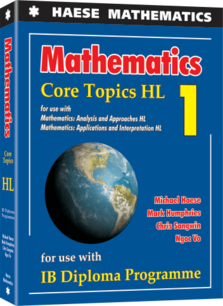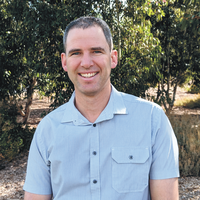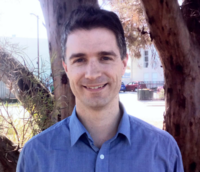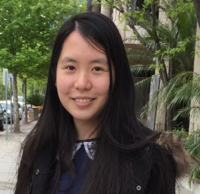Haese Mathematics Core Topics Hl Pdf

Series: IB Diploma Programme
Mathematics: Core Topics HL
+
Physical & Digital Copy
ISBN: 978-1-925489-58-3
$43.45 Australia
(AUD including GST)
$39.50 International
(AUD excl. GST)
Digital Copy duration: 24 months
$30.42 Australia
(AUD including GST)
$27.65 International
(AUD excl. GST)
Digital Copy duration: 24 months
About the Book
For an online preview, please email IB@haesemathematics.com.
Mathematics: Core Topics HL has been written for the IB Diploma Programme courses Mathematics: Analysis and Approaches HL, and Mathematics: Applications and Interpretation HL, for first teaching in August 2019, and first assessment in May 2021.
The book contains the content that is common to both courses. This material can all be taught first, giving the potential to teach all the HL students together from this book at the start of the course.
This is the first of two books students will require for the completion of their HL Mathematics course. Upon the completion of this book, students progress to the particular HL textbook for their course: either Mathematics: Analysis and Approaches HL, or Mathematics: Applications and Interpretation HL. This is expected to occur approximately 6-7 months into the two-year course.
This product has been developed independently from and is not endorsed by the International Baccalaureate Organization. International Baccalaureate, Baccalaureát International, Bachillerato Internacional and IB are registered trademarks owned by the International Baccalaureate Organization.
Year Published: 2019
Page Count: 548
ISBN: 978-1-925489-58-3 (9781925489583)
Online ISBN: 978-1-925489-70-5 (9781925489705)
Table of Contents
Mathematics: Core Topics HL
| 1 | STRAIGHT LINES | 19 | |
| A | Lines in the Cartesian plane | 20 | |
| B | Graphing a straight line | 25 | |
| C | Perpendicular bisectors | 26 | |
| D | Simultaneous equations | 28 | |
| Review set 1A | 30 | ||
| Review set 1B | 31 | ||
| 2 | SETS AND VENN DIAGRAMS | 33 | |
| A | Sets | 34 | |
| B | Intersection and union | 36 | |
| C | Complement of a set | 37 | |
| D | Special number sets | 38 | |
| E | Interval notation | 40 | |
| F | Venn diagrams | 43 | |
| G | Venn diagram regions | 46 | |
| H | Problem solving with Venn diagrams | 47 | |
| Review set 2A | 50 | ||
| Review set 2B | 51 | ||
| 3 | SURDS AND EXPONENTS | 53 | |
| A | Surds and other radicals | 54 | |
| B | Division by surds | 58 | |
| C | Exponents | 59 | |
| D | Laws of exponents | 60 | |
| E | Scientific notation | 66 | |
| Review set 3A | 69 | ||
| Review set 3B | 69 | ||
| 4 | EQUATIONS | 71 | |
| A | Power equations | 72 | |
| B | Equations in factored form | 74 | |
| C | Quadratic equations | 75 | |
| D | Solving polynomial equations using technology | 84 | |
| E | Solving other equations using technology | 86 | |
| Review set 4A | 87 | ||
| Review set 4B | 88 | ||
| 5 | SEQUENCES AND SERIES | 89 | |
| A | Number sequences | 90 | |
| B | Arithmetic sequences | 92 | |
| C | Geometric sequences | 98 | |
| D | Growth and decay | 101 | |
| E | Financial mathematics | 103 | |
| F | Series | 111 | |
| G | Arithmetic series | 114 | |
| H | Finite geometric series | 119 | |
| I | Infinite geometric series | 123 | |
| Review set 5A | 126 | ||
| Review set 5B | 128 | ||
| 6 | MEASUREMENT | 131 | |
| A | Circles, arcs, and sectors | 132 | |
| B | Surface area | 134 | |
| C | Volume | 140 | |
| D | Capacity | 150 | |
| Review set 6A | 154 | ||
| Review set 6B | 155 | ||
| 7 | RIGHT ANGLED TRIANGLE TRIGONOMETRY | 157 | |
| A | Trigonometric ratios | 159 | |
| B | Inverse trigonometric ratios | 162 | |
| C | Right angles in geometric figures | 164 | |
| D | Problem solving with trigonometry | 169 | |
| E | True bearings | 174 | |
| F | The angle between a line and a plane | 176 | |
| Review set 7A | 179 | ||
| Review set 7B | 181 | ||
| 8 | THE UNIT CIRCLE AND RADIAN MEASURE | 183 | |
| A | Radian measure | 184 | |
| B | Arc length and sector area | 186 | |
| C | The unit circle | 190 | |
| D | Multiples of $\frac{\pi}{6}$ and $\frac{\pi}{4}$ | 196 | |
| E | The Pythagorean identity | 199 | |
| F | Finding angles | 201 | |
| G | The equation of a straight line | 203 | |
| Review set 8A | 204 | ||
| Review set 8B | 205 | ||
| 9 | NON-RIGHT ANGLED TRIANGLE TRIGONOMETRY | 207 | |
| A | The area of a triangle | 208 | |
| B | The cosine rule | 212 | |
| C | The sine rule | 216 | |
| D | Problem solving with trigonometry | 221 | |
| Review set 9A | 228 | ||
| Review set 9B | 230 | ||
| 10 | POINTS IN SPACE | 233 | |
| A | Points in space | 234 | |
| B | Measurement | 236 | |
| C | Trigonometry | 240 | |
| Review set 10A | 244 | ||
| Review set 10B | 245 | ||
| 11 | PROBABILITY | 247 | |
| A | Experimental probability | 249 | |
| B | Two-way tables | 253 | |
| C | Sample space and events | 255 | |
| D | Theoretical probability | 257 | |
| E | Making predictions using probability | 264 | |
| F | The addition law of probability | 265 | |
| G | Independent events | 267 | |
| H | Dependent events | 271 | |
| I | Conditional probability | 275 | |
| J | Formal definition of independence | 278 | |
| K | Bayes' theorem | 280 | |
| Review set 11A | 284 | ||
| Review set 11B | 286 | ||
| 12 | SAMPLING AND DATA | 289 | |
| A | Errors in sampling and data collection | 292 | |
| B | Sampling methods | 294 | |
| C | Writing surveys | 300 | |
| D | Types of data | 302 | |
| E | Simple discrete data | 304 | |
| F | Grouped discrete data | 308 | |
| G | Continuous data | 309 | |
| Review set 12A | 312 | ||
| Review set 12B | 313 | ||
| 13 | STATISTICS | 315 | |
| A | Measuring the centre of data | 316 | |
| B | Choosing the appropriate measure | 321 | |
| C | Using frequency tables | 323 | |
| D | Grouped data | 326 | |
| E | Measuring the spread of data | 328 | |
| F | Box and whisker diagrams | 332 | |
| G | Outliers | 335 | |
| H | Parallel box and whisker diagrams | 337 | |
| I | Cumulative frequency graphs | 340 | |
| J | Variance and standard deviation | 344 | |
| Review set 13A | 353 | ||
| Review set 13B | 356 | ||
| 14 | QUADRATIC FUNCTIONS | 359 | |
| A | Quadratic functions | 361 | |
| B | Graphs of quadratic functions | 362 | |
| C | Using the discriminant | 369 | |
| D | Finding a quadratic from its graph | 372 | |
| E | The intersection of graphs | 376 | |
| F | Problem solving with quadratics | 379 | |
| G | Optimisation with quadratics | 381 | |
| H | Quadratic inequalities | 385 | |
| Review set 14A | 389 | ||
| Review set 14B | 390 | ||
| 15 | FUNCTIONS | 393 | |
| A | Relations and functions | 394 | |
| B | Function notation | 397 | |
| C | Domain and range | 400 | |
| D | Rational functions | 405 | |
| E | Composite functions | 410 | |
| F | Inverse functions | 414 | |
| Review set 15A | 421 | ||
| Review set 15B | 423 | ||
| 16 | TRANSFORMATIONS OF FUNCTIONS | 425 | |
| A | Translations | 426 | |
| B | Stretches | 429 | |
| C | Reflections | 435 | |
| D | Miscellaneous transformations | 438 | |
| E | The graph of $y=\frac{1}{f(x)}$ | 441 | |
| Review set 16A | 443 | ||
| Review set 16B | 445 | ||
| 17 | TRIGONOMETRIC FUNCTIONS | 447 | |
| A | Periodic behaviour | 448 | |
| B | The sine and cosine functions | 452 | |
| C | General sine and cosine functions | 454 | |
| D | Modelling periodic behaviour | 459 | |
| E | Fitting trigonometric models to data | 461 | |
| F | The tangent function | 464 | |
| G | Trigonometric equations | 467 | |
| H | Using trigonometric models | 475 | |
| Review set 17A | 477 | ||
| Review set 17B | 479 | ||
| ANSWERS | 483 | ||
| INDEX | 546 | ||
Authors
- Michael Haese
- Mark Humphries
- Chris Sangwin
- Ngoc Vo
Features
-
Snowflake (24 months)
A complete electronic copy of the textbook, with interactive, animated, and/or printable extras.
-
Self Tutor
Animated worked examples with step-by-step, voiced explanations.
-
Theory of Knowledge
Activities to guide Theory of Knowledge projects.
-
Graphics Calculator Instructions
For Casio fx-CG50, TI-84 Plus CE, TI-nspire, and HP Prime
This book offers SELF TUTOR for every worked example. On the electronic copy of the textbook, access SELF TUTOR by clicking anywhere on a worked example to hear a step-by-step explanation by a teacher. This is ideal for catch-up and revision, or for motivated students who want to do some independent study outside school hours.
Graphics calculator instructions for Casio fx-CG50, TI-84 Plus CE, TI-nspire, and HP Prime are included with this textbook. The textbook will either have comprehensive instructions at the start of the book, specific instructions available from icons located throughout, or both. The extensive use of graphics calculators and computer packages throughout the book enables students to realise the importance, application, and appropriate use of technology.
Theory of Knowledge is a core requirement in the International Baccalaureate Diploma Programme.
Students are encouraged to think critically and challenge the assumptions of knowledge. Students should be able to analyse different ways of knowing and kinds of knowledge, while considering different cultural and emotional perceptions, fostering an international understanding.

This book is available on electronic devices through our Snowflake learning platform. This book includes 24 months of Snowflake access, featuring a complete electronic copy of the textbook.
Where relevant, Snowflake features include interactive geometry, graphing, and statistics software, demonstrations, games, spreadsheets, and a range of printable worksheets, tables, and diagrams. Teachers are provided with a quick and easy way to demonstrate concepts, and students can discover for themselves and re-visit when necessary.
Support material
-
Errata
Last updated - 29 Apr 2020
Related Products
Haese Mathematics
Proudly Supports



- Haese Publications
- International Baccalaureate (IB)
- Australian Curriculum
- Cambridge Assessment International Education
- UK Curricula
- Mathematics Dictionary
- The Mathematics Book [published by Zenolith]
- Previous Editions and Clearances
- Digital Books
- Infinity Question Generators
- Snowflake Online Learning
- Support
- Errata
- FAQs
- News & Events
- About Us
- Contact
- Snowflake Login
Haese Mathematics
Mailing List
SUBSCRIBE: Register your interest for information related to Haese Mathematics products
Haese Mathematics Core Topics Hl Pdf
Source: https://www.haesemathematics.com/books/mathematics-core-topics-hl
Posted by: smithmeren1989.blogspot.com





0 Response to "Haese Mathematics Core Topics Hl Pdf"
Post a Comment